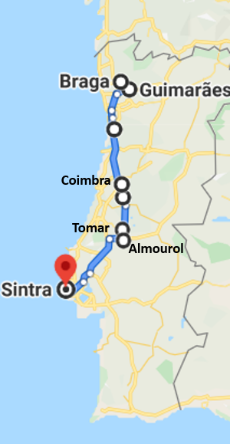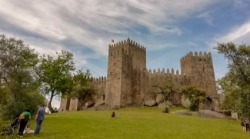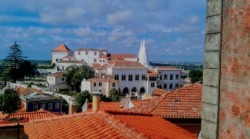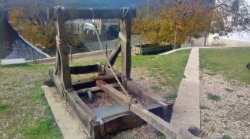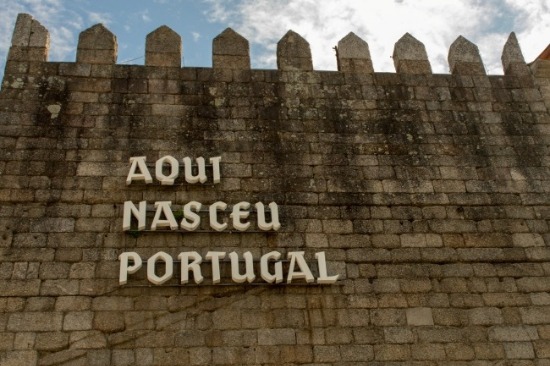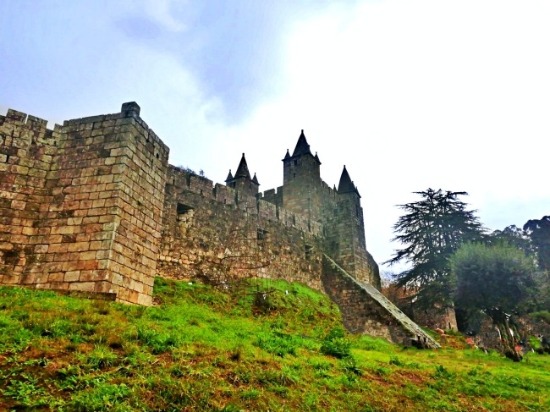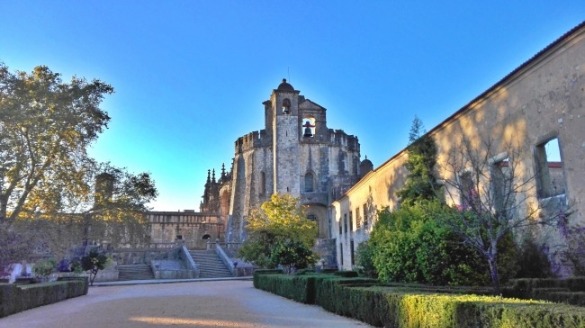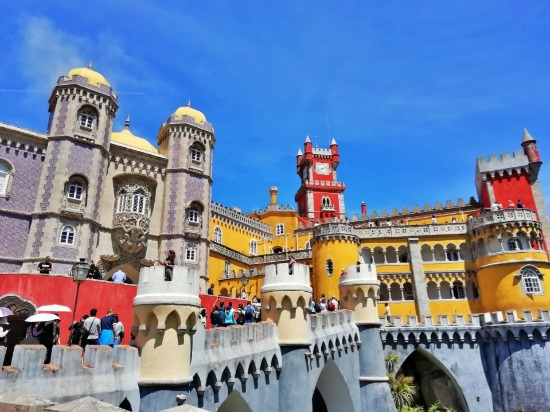Knights Templar Heritage
Portugal is a privileged country for those who want to know more about Knights Templar and its heritage.
The Poor Knights of Christ - devoted to the defense of the Holy Places of Palestine and the protection of pilgrims on the dangerous paths between the port of Acre and Jerusalem - originated from a group of nine knights. Between them it is said - the Portuguese Arnaldo da Rocha.
Militia founded in 1119 by Hugo de Payens and recognized as Order with Rule, in the Council of Troyes, in 1128, assumed a fundamental role in the Iberian Peninsula, and in particular in Portugal.
The military role they took on in the campaigns to regain territories from the Moors, as well as, their conduct associated with the spread of the Christian faith was recognized and rewarded by the Portuguese Kings: land donations; tax exemption and special jurisdiction.
Their persecution and extinction as Templar in France led them to seek refuge and safety elsewhere. Portugal was a safe haven and, from the Knights Templar... then the Order of Christ was born, by the action of King D. Dinis.
Their knowledge; richness or innovation, with regard to the military and mystical architecture associated...
Portugal is a country with a Templar soul. Their heritage can be found in our country and their presence through times.
PLACES TO VISIT
Day 1 - Braga. Guimarães
We will start at 9h30. Does it look good or do you prefer to adjust? It's your choice.
Starting in Braga.
This city assumes itself as a city of clear importance in the establishment of the Knights Templar in Portugal.
In fact, the Templar may have reached the north of the Portucalense County - as Portuguese territory was originally called with a different geographic configuration from that of today - in 12th century.
In this city it is known that the Militibus Templi Salomonis bought several properties, with a clear intention of fixing for greater stability of the Templar friars. The first vestiges of their presence purchase the idea of buying properties and not donations - their identity and fame associated with the Crusades was still not enough for the Condal Family to attribute such merit to them; as well as, its international statutory recognition, it was also not accomplished.
Braga was then the most viable option in this period, as Santiago de Compostela affirmed with the pilgrimages; the growth of the Portucalense County and the establishment of other Orders in this city, such as the Hospitallers. But it is not only the Knights Templar who visit Braga. Here, we can find - in the oldest Cathedral of the country - the remains of the Condal Family (Count Dom Henrique and Dona Teresa, so important for the Templar settlement in our country).
We also love, in this beautiful city - the flowered Avenues Central and Liberdade; the Raio Palace, with its intense blue tile facade. As well as, its entire historic center that makes us travel, sometimes, to the period of the Roman Empire.
If time permits, the visit to Braga will end, with Bom Jesus de Braga where you can enjoy a wide view of this capital of the Minho region and the surrounding mountains.
In the afternoon, we will visit the iconic city of Guimarães.
In Guimarães we present you the birthplace of the Portuguese nation.
The squares of the historic center - Praça da Oliveira and Praça de Santiago - flanked by facades that resemble medieval times and a drink will serve to recapture the strength and spirit of our visitors.
We will climb to the highest part, where is the Guimarães Castle - originated on the orders of the famous Countess Mumadona to build a fortress to protect the monks who lived, in a nearby monastery; and later, with the parents of the first King of Portugal, became residence and here was born Afonso Henriques. Next to the Castle, the São Miguel Church, where the first King of Portugal was baptized; the Palace of the Dukes of Braganza - a 15th century manor house with its collections of porcelain from the Indian Company, among other rarities.
We can't forget the main theme of our tour... Templar. Already with a donation made by the Earldom of the Portucalense Family, in 1128, of Castelo de Soure, The Knights Templar were about to see the rules written by Saint Bernard of Claraval approved, and also approved at the Council of Troyes, regarding their identity as an Military and Religious Order .
What a beautiful place to spend the evening and have a splendid dinner with portuguese traditional gastronomy.
Overnight in Guimarães.
Day 2 - Santa Maria da Feira. Coimbra
The Castle of Santa Maria da Feira is one of the most iconic and scenic Portuguese castles, both for its architecture and its clearly military structure.
In the process of building our Portuguese nationality and our territorial expansion, this castle was of great importance. It was also instrumental in preparing the victory of the future portuguese King Afonso Henriques in the Battle of São Mamede, in 1128, against the army of his mother, Dona Teresa. The Countess was faithful to her ancestral family of Leon lost the battle, and thus, determined the future of Afonso Henriques as the first King of Portugal.
The Chapel and the Main Tower of the Castle stand out there. In this period of the History of Portugal, the Templar knights assume great importance and close connection with the first King of Portugal - that they accompanied, from the first battles.
Gualdim Pais who had been a armour-bearer of Afonso Henriques was made a Knight by him after the epic Battle of Ourique against the Moors, 1139. After his arrival from the Holy Land - where he fought for 5 years - was made the first provincial Master of the Order of the Temple, of Portuguese origin.
Coimbra, December 1185.
When King Afonso Henriques dies it is Gualdim Pais and the Templar who pay him the highest honor at the Santa Cruz Monastery. They had accompanied him, in life, on a glorious mission: the beginnings of the construction of Portuguese nationality and expansion of the territory to the south.
Also known as the City of Knowledge as Coimbra is known since the Middle Ages it's a charming place to spend some time, visiting.
Bathed by the Mondego River, it is famous for its University and Joanine Library; students in their black cloaks and serenades; the Monastery of Santa Cruz of Coimbra - where the first King of Portugal, Afonso Henriques, rests; the New Cathedral; the Old Cathedral and the historic center.
In this city, UNESCO classified the University of Coimbra - the oldest in Portugal [1290] and one of the oldest in Europe; the Joanine Library and Alta of Coimbra; as well as Sofia Street, in 2013.
Overnight in Coimbra.
Day 3 - Penela. Tomar
Arriving in Penela we can't stay indifferent to the castle standing on the top of the hill.
With a very irregular plant, adapted to the terrain, where it was built, the Castle of Penela had great relevance in the defense of the region, in the midst of the Christian reconquest process - as this was an area of many advances and setbacks in the battles between Christians and Muslims, in Middle Ages.
Welcome to Tomar - the Templar city.
The city of Tomar invites you to stroll along the banks of the Nabão River; to have a drink, in one of the streets and squares, with tile facades or Art Nouveau; or even, a walk through the medieval Jewish neighborhood. However it's the Knights Templar heritage that attracts most of our visitors.
It will be in the Convent of Christ that we will find the gems of Templar - such as the Templar Church, with an octagonal shape called “Charola”. Also memoirs of the Order of Christ - that the King Dom Dinis' prudence and mastery converted the Templar into this new Order, inspired by his primitive name Militia of Our Lord Jesus Christ, when they were persecuted and extinct by order of Philip 'The beauty'; Henry The navigator lived here and this was a special place to develop the spirit of what became famous in History as Age of Discoveries. At its peak - the Manueline artistic style; the specificity of Portuguese Renaissance architecture and Mannerism.
The Convent of Christ and the Templar Castle make a unique monumental ensemble. It was classified by UNESCO as World Heritage in 1983.
In addition, a visit to the Church of Santa Maria do Olival - ordered to be built by Gualdim Pais, in the 12th century and made Pantheon of the Templar Order.
Opposite Santa Maria do Olival, we find a quadrangular tower that is believed to have had, in the Middle Ages, a tunnel that connected the Church to the Templar Castle of Tomar.
In the main square of the City, the statue of Gualdim Pais, in front of the Church of Saint John Baptist.
This tour introduces you to the role of Military and Religious Orders in the creation of the Kingdom of Portugal and its importance during the period of maritime discoveries. But we also lift the veil over the secrecy of some of them and their mystique through the decorative elements of the Convent of Christ.
The next 2 nights will be spent in Tomar, at a hotel of your choice.
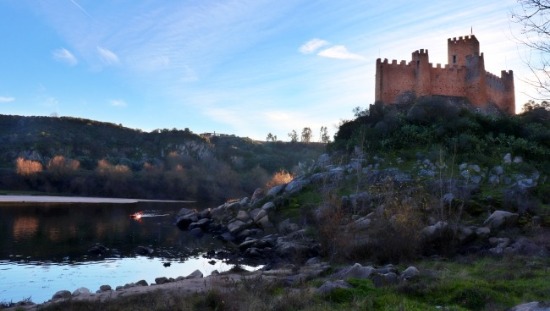
Day 4 - Tomar. Almourol
Free morning in Tomar.
In the afternoon we will visit the Castle of Almourol - one of the most scenic monuments of the Christian Reconquest. We’ll find it in middle of the Tagus River, on a small island.
The crossing is made in a picturesque safe and traditional wooden boat: few minutes but enough time to embrace all the charm of the inspiring landscape.
The history of this Castle takes us, once again, to the period of the Christian Reconquest during the Middle Ages. Christians occupied it in the 12th century, but Templar already knew it as Almorolan - according to an inscription on the entrance. It was part of the territory's defensive line to the south.
When Knights Templar were extinguished, this Castle lost its original importance; the imagery of the men who associate it with a place where the Templar could have deposited some treasure remained - a mystery that still prevails today but that no one finds an answer to.
Overnight in Tomar.
Day 5 - Sintra
Last day of our Templar Tour, we will start at the usual time…
Today we will visit the village of Sintra. We’re close to Lisbon.
After reconquering Sintra from the Moors, in 1147, the first King of Portugal Afonso Henriques handed over the guard of the village, to the Order of the Temple. In 1157, the King meeting with Gualdim Pais and asked him the Templar to remain as the first grantees of Sintra.
There is also information that some of the buildings, in the village of Sintra lead, on underground floors, to tunnel galleries associated with the Templar presence.
In this mystical hill, even today, there is a Templar soul witnessed by its history and, fundamentally, by the spirituality that is associated with it.
Sintra surprises you with places where Man and Nature have been living in a perfect relation through the ages, preserving the magic of Sintra Hill.
Climbing the mountain by car we can see stunning green landscape and Pena Palace stands out, right in the middle, with its bold colors and Gothic/Renaissance decorative elements.
At the top of the hill, the Moorish Castle. There we recommend you to take a deep breath and let yourself be inspired by the beauty of the surroundings.
One of the most romantic places in Portugal. Classified as World Heritage by UNESCO, in 1995.
After a break, in the center of the romantic village of Sintra, we'll taste the traditional pastry Queijada de Sintra and the cherry-based liqueur Ginjinha. Nice idea! The small street shops, full of charm; terraces and narrow streets invite you to lunch.
Free afternoon. We suggest a visit to Quinta da Regaleira.
PRICE
2 PERSONS - 1660€ | 3 PERSONS - 1920€ | 4 to 8 PERSONS - 530€ per person
CHILDREN up to 12 years - 100€
Additional information:
- Minimum of 2 adults to make the tour
- The duration of each day of guided tour is 8 hours
Included
- Passenger and luggage transportation in SUV or Van, with AC
- 5 days of private tour with guide service in Portuguese, English or Spanish
- Entrance fees to castles
- 1 free morning and 1 free afternoon
- Daily bottle of water, 33 cl/pax
- Travel insurance
- Pickup and Drop Off in Fátima, Batalha, Alcobaça, Nazaré, Leiria, Óbidos, Tomar and Coimbra
- Pickup and Drop Off in Lisboa adds 100 € (per group) to the prices
- Pickup and Drop Off in Porto adds 150 € (per group) to the prices
Not Included
- Accommodation and meals
- Tickets to National Monuments or any other, with the exception of castles where it will be made guided visits
- Personal expenses
- Everything that is not described in the Included section
